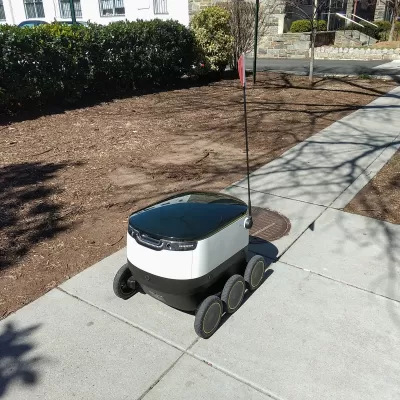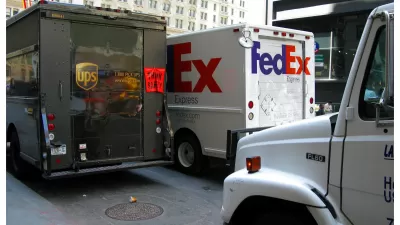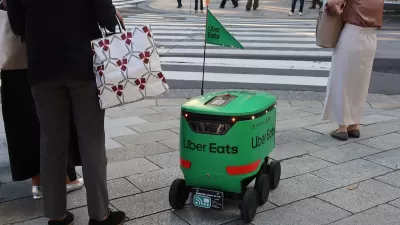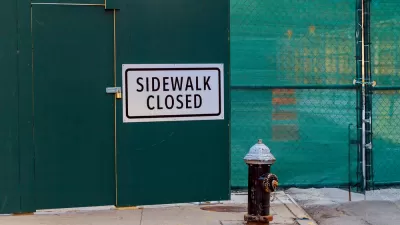Amazon and FedEx are developing bots that would travel on city streets and sidewalks. The companies are also working behind the scenes on legislative efforts that would help them deploy the technology in the future.

"Both Amazon and FedEx are developing delivery robots. FedEx’s bot, which is called Roxo and looks like a small refrigerator, has completed on-road tests in four cities. Scout, built to deliver Prime packages, also is testing in four cities. The companies present similar visions: A delivery van full of robots would arrive in a neighborhood, and robots would travel the ‘last mile’ to customers’ doorsteps without human aid," writes Aarian Marshall.
The companies are backing bills this year in more than a dozen states that would allow delivery robots on public roads and sidewalks. The legislation is not consistent, with different regulations about where the robots could operate and weight limits. But observers say that shaping legislation early on is a way to establish certainty while the new technologies are developed.
However, concerns about public safety, particularly on sidewalks, and cities' inability to craft their own regulations for the robots have emerged. Lawmakers and lobbyists say that Amazon and FedEx seem open to discussions about changes to the bills. "Scott Mooneyham, of the North Carolina League of Municipalities, contrasts that approach with the early actions of scooter companies, which became notorious for dropping their electric devices on public sidewalks without giving local officials prior warning," says Marshall.
FULL STORY: Amazon and FedEx Push to Put Delivery Robots on Your Sidewalk

Planetizen Federal Action Tracker
A weekly monitor of how Trump’s orders and actions are impacting planners and planning in America.

Map: Where Senate Republicans Want to Sell Your Public Lands
For public land advocates, the Senate Republicans’ proposal to sell millions of acres of public land in the West is “the biggest fight of their careers.”

Restaurant Patios Were a Pandemic Win — Why Were They so Hard to Keep?
Social distancing requirements and changes in travel patterns prompted cities to pilot new uses for street and sidewalk space. Then it got complicated.

Maui's Vacation Rental Debate Turns Ugly
Verbal attacks, misinformation campaigns and fistfights plague a high-stakes debate to convert thousands of vacation rentals into long-term housing.

San Francisco Suspends Traffic Calming Amidst Record Deaths
Citing “a challenging fiscal landscape,” the city will cease the program on the heels of 42 traffic deaths, including 24 pedestrians.

California Homeless Arrests, Citations Spike After Ruling
An investigation reveals that anti-homeless actions increased up to 500% after Grants Pass v. Johnson — even in cities claiming no policy change.
Urban Design for Planners 1: Software Tools
This six-course series explores essential urban design concepts using open source software and equips planners with the tools they need to participate fully in the urban design process.
Planning for Universal Design
Learn the tools for implementing Universal Design in planning regulations.
Heyer Gruel & Associates PA
JM Goldson LLC
Custer County Colorado
City of Camden Redevelopment Agency
City of Astoria
Transportation Research & Education Center (TREC) at Portland State University
Camden Redevelopment Agency
City of Claremont
Municipality of Princeton (NJ)





























